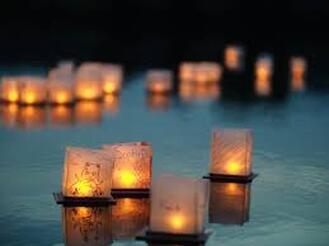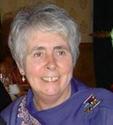
It was on the 6th August 1945 that the United States, with the agreement of the British Government, dropped the first atom bomb on Hiroshima, hoping to gain the immediate surrender of the Japanese Emperor and so bring the Second World War to an end - without risking US casualties on the ground. When that didn’t happen a second bomb was dropped on Nagasaki three days later. And had the Emperor not surrendered five days after that there were plans to drop more atomic bombs on other Japanese cities. The massive blasts completely destroyed the cities, killed hundreds of thousands of citizens and left many suffering from radiation poisoning.
I’ve been privileged to visit Hiroshima, a city that has resurrected itself but retains evidence of the horrors of the bomb in its Memorial Peace Park through the skeletal remains of the former Hiroshima Prefectural Industrial Promotion Hall which has been left standing just as it was after the blast and the museum giving an insight into the terrible destruction and suffering of human lives. To see simply a shadow on a step – all that remains of someone who was vaporised because they were at the epicentre of the blast is unforgettable. I will never forget it. If anything showed me the horrors of nuclear weapons it was that. Nor will I forget the walk and prayers for peace on the evening of 5th August and the annual peace service itself. At 8.15, the exact time at which the bomb fell there was a profound moment of silence and the release of white doves of peace. Hiroshima, which for us all is a reminder of the horrors of nuclear weapons has become a symbol of peace with its unceasing call to abandon nuclear weapons – unheeded by the most powerful countries in the world.
It so happens that in the Catholic Church the 9th August, the day the bomb fell on Nagasaki, is celebrated as the feast of St Teresa Benedicta of the Cross who was murdered in the gas chambers of Auschwitz in 1942 at the age of 51. Sr Teresa Benedicta was born Edith Stein and the youngest child of a large Jewish family. She was an academic, a convert to Catholicism who became a Carmelite nun in Cologne but was transferred with her sister to a convent in the Netherlands because the community feared for her safety. She herself did not believe she would escape the persecution of her people and her community described how she began "quietly training herself for life in a concentration camp, by enduring cold and hunger" after the Nazis invaded the Netherlands in May 1940. She was indeed arrested, as was her sister, because of her Jewish roots and sent to Auschwitz to die in the gas chambers.
I’ve also been to Auschwitz though can’t say it was a privilege to be there but it was an important and sobering visit. To see the gas chambers, the ovens where people’s bodies were burned, the pits where their remains were put, the pictures detailing the names and ages of those murdered, the huge piles of hair, suitcases, shoes etc that had belonged to the victims of such hate. I had wondered before I went if there would be a spirit of evil about the place but in fact I felt it was beyond evil. It was dead in spite of the birds singing in the Birch trees surrounding Birkenau. There seemed to be no hope in this place of death. I wondered how souls could rest having died in such horrific circumstances and understand why the victims must be remembered, lamented and prayed for. The Holocaust of course has seared into the soul of the Jewish community and someone once said that to understand Judaism today apart from the Holocaust was to understand Christianity apart from the Crucifixion of Jesus.
It also happened that our branch of the Council of Christians and Jews had a zoom meeting recently at which we heard of the life and death of Jane Haining, a Scottish woman who also died at Auschwitz. She began life on 6th June 1897 in the small village of Dunscore in Scotland but eventually found herself in Budapest as matron of the Jewish and Christian girls boarding at a school run by the Church of Scotland, a position she dearly loved. Her biographers show her as an excellent, efficient, happy, energetic, a loving and well-loved matron who suffered greatly at the threat to her pupils’ survival. When the Church of Scotland, fearing for her safety, advised her to return home she opted to stay in Hungary with her charges. She tearfully sewed yellow badges on to the clothing of the Jewish children and the story goes that the Christian children in the school chose to sew yellow badges on to their own clothing in solidarity with their friends. She was arrested and deported to Auschwitz in May 1944 and died there three months later, probably as a result of starvation and the camp's catastrophic living conditions. She is recognised by Yad Vashem in Israel as Righteous Among the Nations.
So two events, two amazing women, all now interconnected with a message for us all as we face a future after coronavirus. Let’s make it a safe and happy one.


 RSS Feed
RSS Feed
